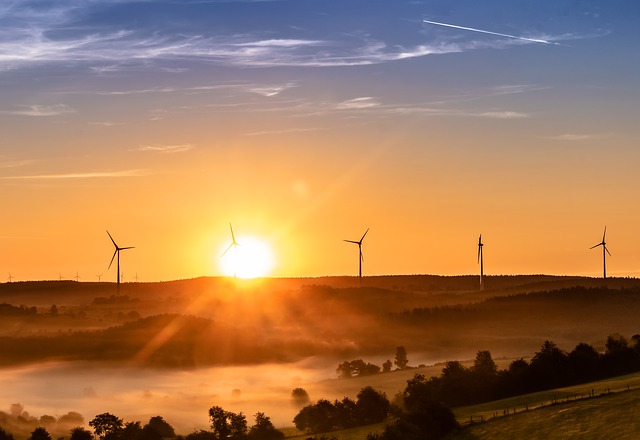According to an analysis by the SUN DAY Campaign of data just released by the Federal Energy Regulatory Commission (FERC), U.S. electrical generating capacity by renewable energy sources (i.e., biomass, geothermal, hydropower, solar, wind) has now – for the first time – surpassed that of coal.
FERC’s latest monthly “Energy Infrastructure Update” report (with data through April 30, 2019) notes that 18 “units” of new wind capacity (1,545 MW) and 102 units of new solar capacity (1,473 MW) were added during the first four months of this year. Coupled with four units of new hydropower (29 MW), that was enough to push renewable energy’s share of total available installed U.S. generating capacity up to 21.56%. By comparison, coal’s share dropped to 21.55% (down from 23.04% a year ago). *
FERC’s data also reveal that the nation’s renewable energy capacity has been adding, on average, a percentage point each year. That is, a year ago, it was 20.66%; three years ago, it was 18.16%. The share of the nation’s generating capacity provided by utility-scale solar alone has more than doubled during the past three years from 1.42% to 3.23%.** Meanwhile, wind’s share has increased from 6.43% to 8.25% and is now on track to surpass hydropower (8.41%) within the next few months.
Moreover, the same report indicates that by May 2022, proposed “high probability” generation additions and retirements could result in a net increase in renewable energy capacity of 40,993 MW. By comparison, net capacity by nuclear, coal, oil, and natural gas combined could actually decline by 24 MW; that is, retirements would exceed additions.
While net growth by just natural gas is projected to be 18,530 MW, that is more than offset by net losses for coal (12,409 MW), nuclear (5,106 MW), and oil (1,039 MW). And even natural gas’ projected net growth will be dwarfed by that of wind (25,117 MW) and almost equaled by that of utility-scale solar (14,846 MW). **
Further, if FERC’s projections prove accurate, in three years, renewable energy sources will provide nearly one-quarter (i.e., 24.15%) of the nation’s total available installed generating capacity with wind alone accounting for over a tenth (10.01%) and solar at 4.32%. The balance will be provided by hydropower (8.16%), biomass (1.33%), and geothermal (0.33%).
* Capacity is not the same as actual generation. Capacity factors for nuclear power and fossil fuels tend to be higher than those for most renewables. For calendar year 2018, the U.S. Energy Information Administration (EIA) reports that renewables accounted for a little more than17.6% of the nation’s total electrical generation – that is, a bit less than their share of installed generating capacity in 2018 (over 21.2%). Coal’s share of electrical generation in 2018 was 27.2%.
** FERC only reports data for utility-scale facilities (i.e., those rated 1-MW or greater) and therefore its data does not reflect the capacity of distributed renewables, notably rooftop solar PV which – according to the EIA – accounts for approximately 30% of the nation’s electrical generation by solar. That would suggest that solar capacity is now actually 4% – or more – of the nation’s total and could increase by more than 20,000 MW by May 2022.




